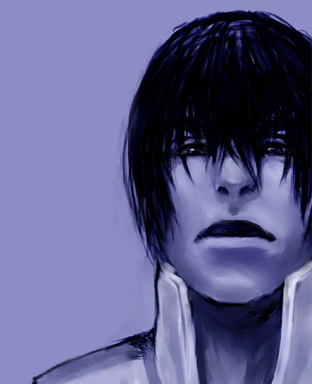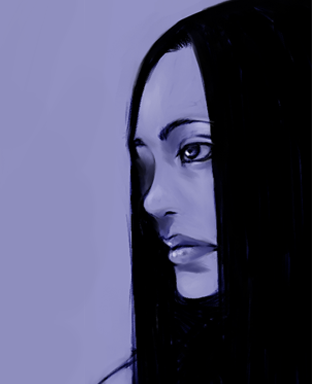Etymology

In the Japanese script of The Silver Case, character names are written in phonetic katakana and almost never in kanji, necessitating a degree of speculation as to their potential meanings. The unusual name Uehara Kamui (ウエハラ・カムイ) hints at the nature of its bearer. In kanji, the surname “Uehara” (ウエハラ) would usually be 上原. The first character means “above.” According to the Japanese–English dictionary Jisho (my Japanese is not very good), the second means “wilderness” or “original.” In The Silver Case, fitting the ambiguity of Kamui, this could allude to Kamui as the power over the primal wilderness of underlying human reality or the power of the oligarchs over the Format Kamui, or both, one rising over the other.

The richer, more evocative given name “Kamui” (カムイ) has two likely meanings. Cape Kamui, located in Shakotan, Hokkaido, is mentioned twice in The Silver Case as the place Uehara Kamui may have come from. In Japanese, its name is spelled 神威岬. According to Jisho, the kanji here pronounced as “kamui” (神威) mean “[a] god’s authority” or “[a] god’s majesty.” This implies that Uehara Kamui carries divine sanction, and his unstoppable wrath and increasingly religious veneration bear this out. Underscoring the religious point, when Cape Kamui is mentioned in “LifeCut,” there is footage of snowy torii, an explicitly spiritual symbol. However, especially if Kamui comes from Hokkaido, land traditionally held by the Ainu people, there is a perhaps more obvious meaning to consider.
“Kamui” (カムイ) is the Ainu word for spiritual beings, as distinguished from humans. In this context, the spelling is often rendered in Latin letters as “kamuy.” This is probably related to the Japanese word for deities, “kami” (神). Whether The Silver Case qualifies as a colonizing culture misappropriating the terminology of an indigenous minority I am unsure, but the implication of Kamui’s spiritual power and veneration is clear.
Ainu people do not understand kamuy as always benevolent. Utagawa Hiroshi describes kamuy as “beings deserving of cautious treatment” because they are powerful and thus potentially dangerous (256). As animators of animals and natural phenomena such as fire, kamuy may maintain a condition of plenty but only if humans show them due respect. For instance, in the second of Chiri Yukie’s kamuy yukar sung by the owl kamuy, Chikap Kamui, kamuy stop sending humans food in response to the mistreatment of animals (Chiri, The Song the Owl God Sang 39–40). There are also kamuy outright hostile to humans. The concept of Kamui as a spiritual being of this kind will be returned to in the section on the fourth Kamui in Chapter 2.
The name “Uehara Kamui,” then, connotes primordial spiritual authority not necessarily aligned with humans, as well as divine power and potential danger if mistreated. And he is indeed mistreated, causing the violence done him to rebound against the corrupt and Japan at large throughout The Silver Case and, to some extent, the series.

Unlike Uehara Kamui, Shimohira Ayame is only one Ayame and not uniquely important in the universe of the narrative. But because she is the first Ayame in the series, her name is worth particular consideration. The etymology of “Shimohira Ayame” (シモヒラ・アヤメ) is somewhat more elusive than the name of her masculine counterpart. According to Jisho, the surname “Shimohira” is written in kanji as 下平 or 霜平. The first spelling is more likely and will be considered further. The first kanji (下) means “under,” and the second (平) means something flat or common. “Shimohira,” under something ordinary, suggests the opposite of “Uehara,” over the original (and therefore special) thing. This suggests the notion that Ayame is a counter to Kamui. Ayame is the only one who might stop Kamui. However, it also connotes sexuality, the way the two physically complement each other, and thus their desire to be together even if not always in sexual union (Fujiwara and his girlfriends, Sumio and Shimohira, Minato and Sakura, Furuya and Nakama, Akria/Uehara and Sakura, Seiji and Yuuri, Tokio and Meru), and the undoing of the TRO/CCO plot.
In “HIKARI,” Shimohira claims the TRO/CCO derived the name “Ayame” (アヤメ) from “ayameru” (殺める), “to murder.” However, the name “Ayame” usually means iris or sweet flag, Acorus calamus, which Meru mentions Kamijo pointing out to her in “MISOGI.” Correspondingly, Ayame is repeatedly associated with flowers and blooming and says she wishes her name meant this instead: “I wish I could’ve been raised like some sort of pitiful flower. Not a day goes by that I don’t think that.” The title “Sweet Blue Flag,” the music track that plays in the boss battles against Ayame in killer7, refers to the same kind of flower. Her given name is a pun that subverts expectations: initially seeming harmless and beautiful like a flower, she is actually a murderer. It also indicates a propensity to begin in one condition and transform into another, to bloom. The Ayame characters, Shimohira, Chizuru, and Sakura, all “bloom” in very different ways: becoming a serial killer, becoming a patsy of the police state, and becoming a revolutionary figure, respectively. So too do Ayame Blackburn and Meru, as we will see.
Note also that Kamui/Ayame is associated with transformation more broadly: their violence not only transforms society but transforms the avatars of the Kamui/Ayame information.
With this established, the characters’ roles in the story must be considered.